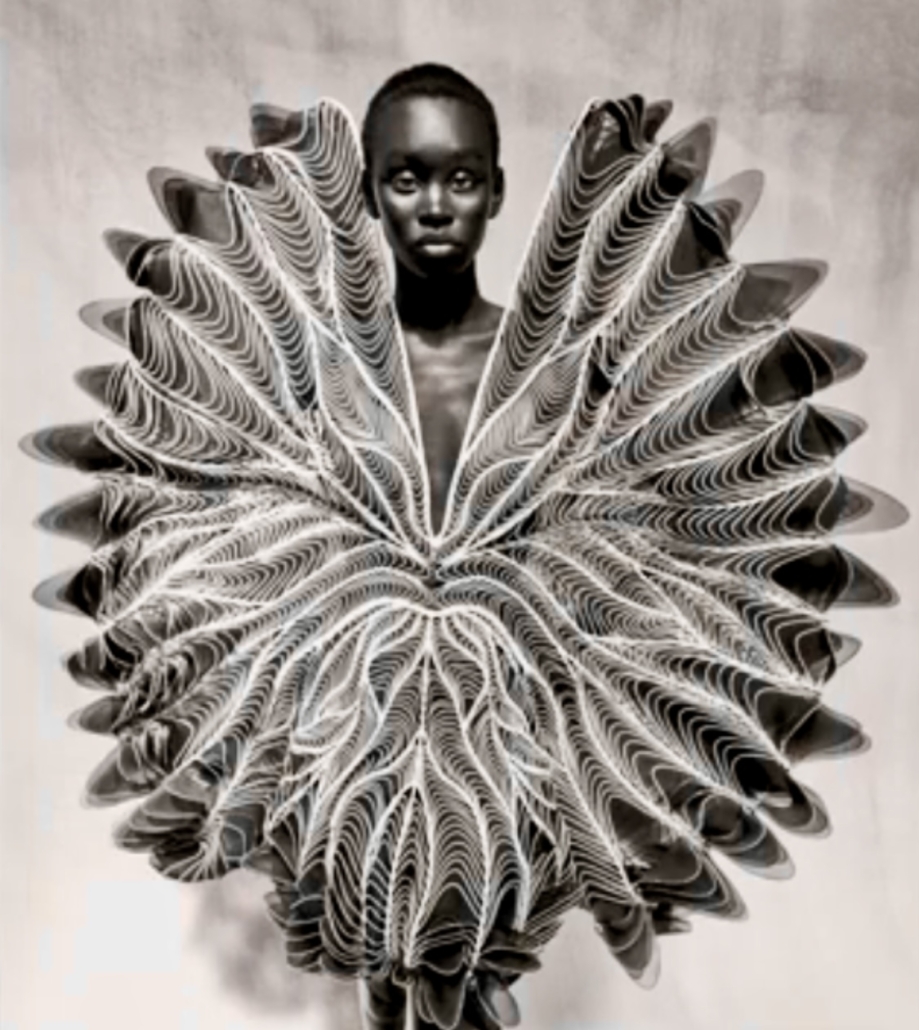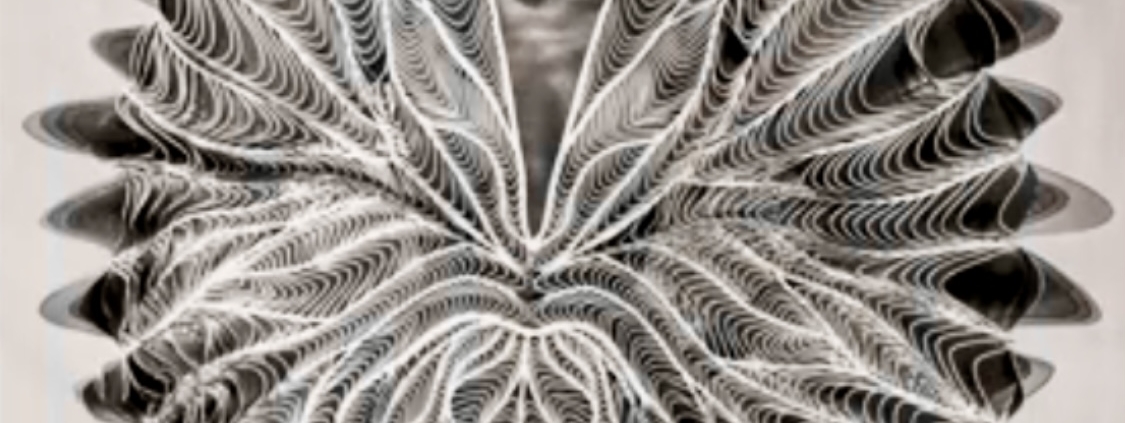Iris Van Herpen
Sculpting the Senses
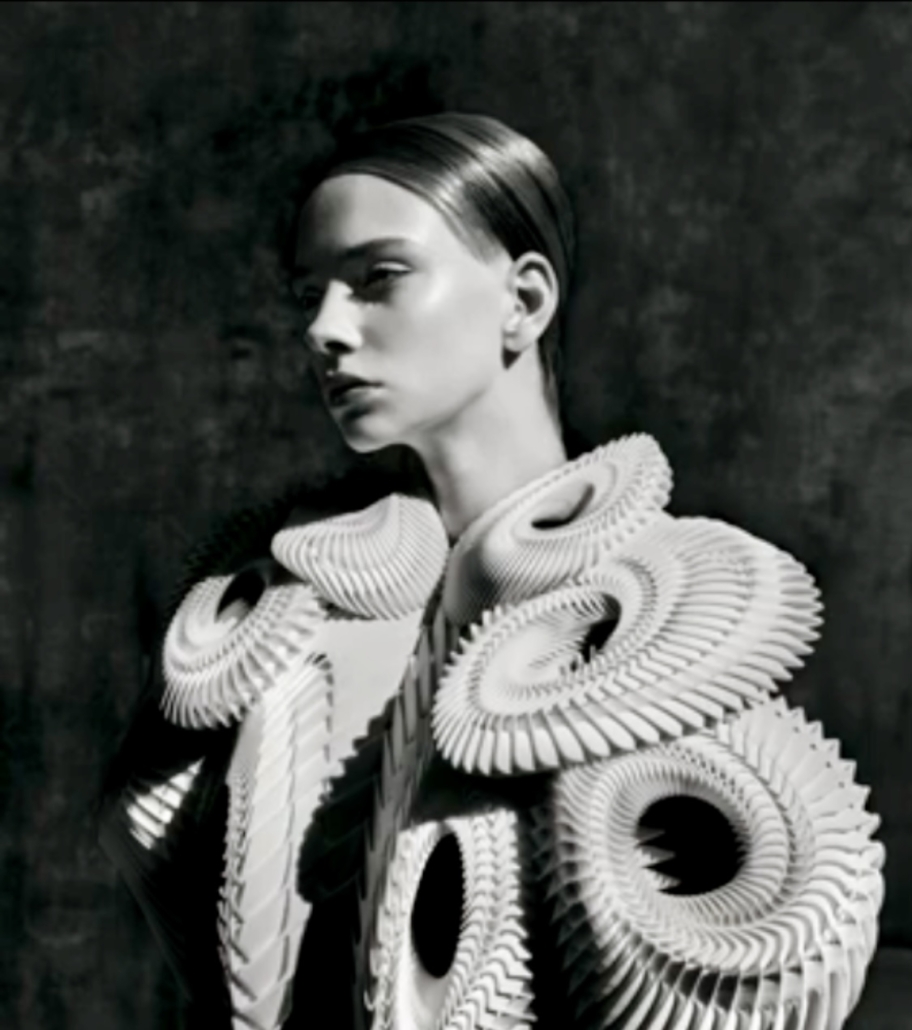
Iris van Herpen holds a resolutely special place in the history of fashion. The field of his research and experiments aims to unravel the mysteries of the human body. Dynamic tension, fluidity, finesse and complexity, but also poetry and philosophy, the main conversations she establishes between body and clothing allow her to transmit a new, rich and enthusiastic look at our world in the making. A world where body, mind and soul interact in an invisible way, more and more intensely.
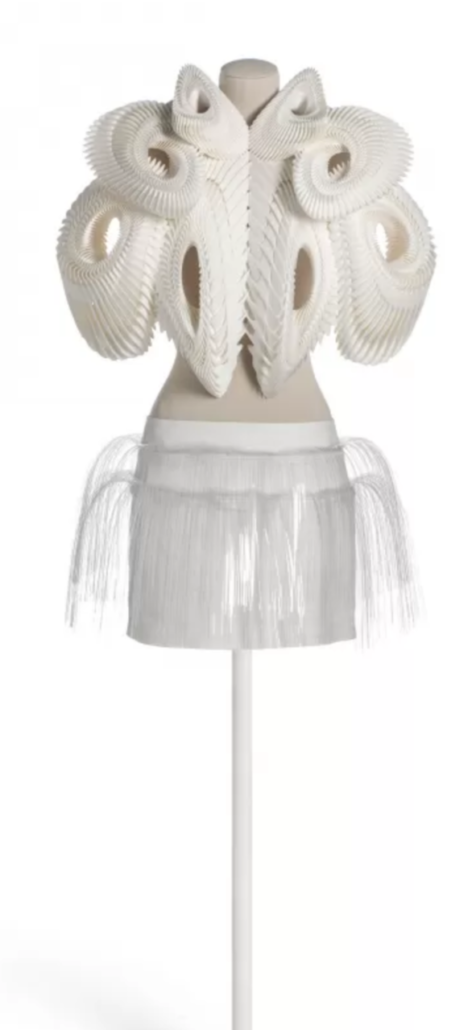
His creations shake up the codes of clothing and are so many openings towards worlds a priori disconnected from his discipline. His insatiable curiosity leads him to explore distant areas. It draws as much from contemporary art as from architecture, from the life sciences as from the history of the arts, from alchemy as from mysticism. She handles artisanal techniques as well as cutting-edge technologies with precision and expertise. His meetings and collaborations with creators from the past as well as the present are as many forays into unknown territories, permanent questions, incomparable heights to shake up the order of things and the foundations of fashion. The living world, but also classical and contemporary dance, which she practices from a very young age, are the founding elements of her relationship with the body and clothing.
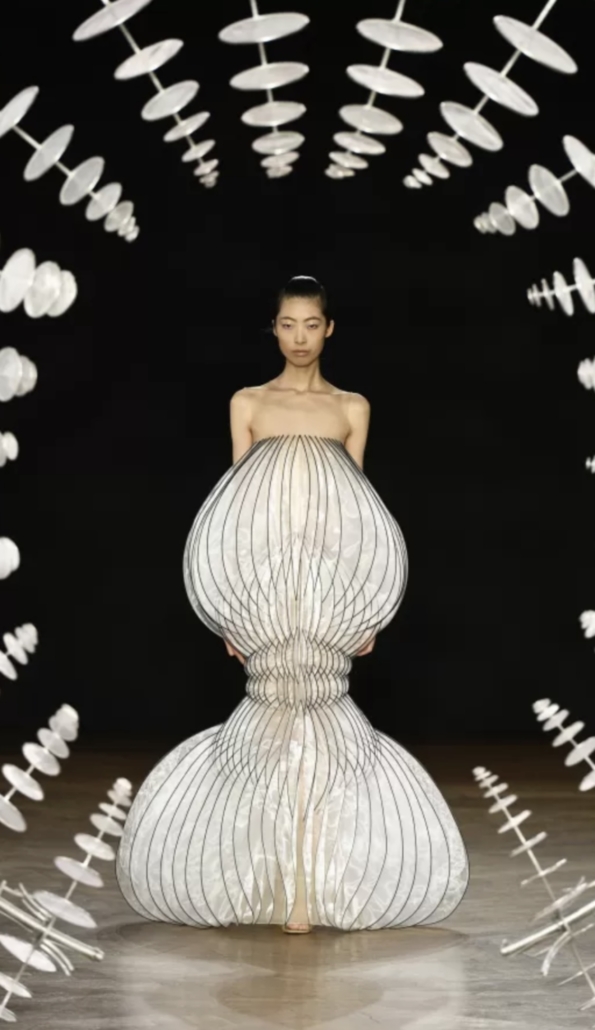
Fascinée par l’eau, […] elle y puise un univers infini d’intuitions. Et, comme l’écrit Gaston Bachelard, « l’eau est aussi un type de destin, non plus seulement le vain destin des images fuyantes, le vain destin d’un rêve qui ne s’achève pas, mais un destin essentiel qui métamorphose sans cesse la substance de l’être. ». Et c’est ce rapport étroit à l’eau, ses multiples états, ses facultés à se métamorphoser qui permet à Iris van Herpen de transposer la philosophie de cet élément à celle de ses créations. De la minuscule goutte de pluie tombée de la troposphère à l’immensité de l’océan, elle approfondit les jeux d’échelle et pratique des grands écarts permanents entre l’infiniment petit et l’infiniment grand, entre le passé et le présent, entre aujourd’hui et demain, entre un monde en souffrance et un autre en devenir. Elle compose autour des corps physique, mental, émotionnel et éthérique, cherchant à déclencher, par le vêtement, un dialogue entre le corps et les sens. Ses robes sont une invitation à pénétrer dans une société en pleine métamorphose, à vivre des expériences sensorielles et extrasensorielles.
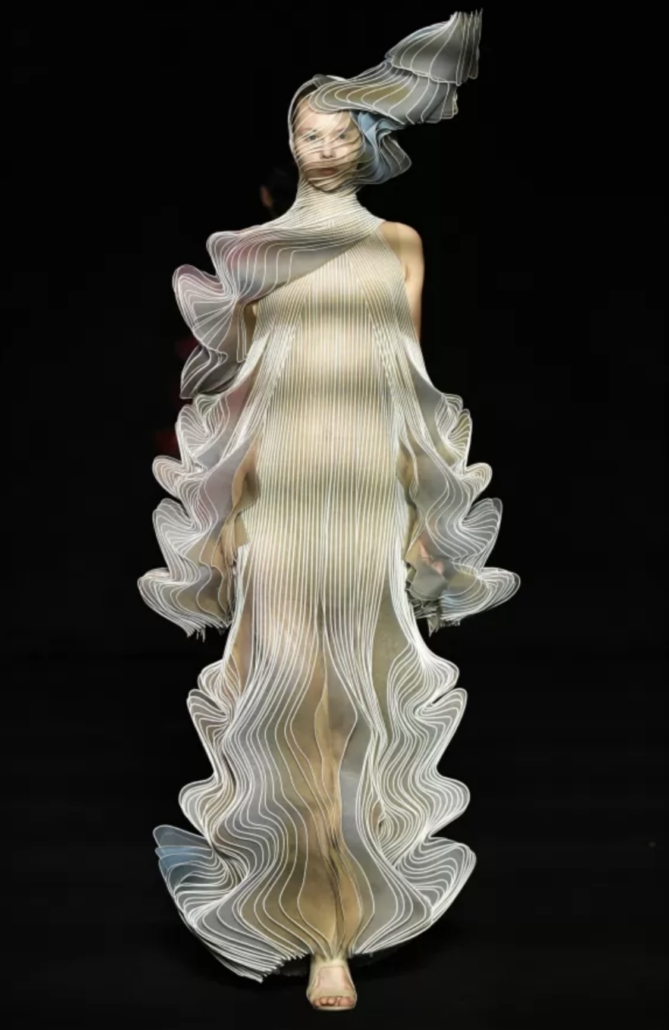
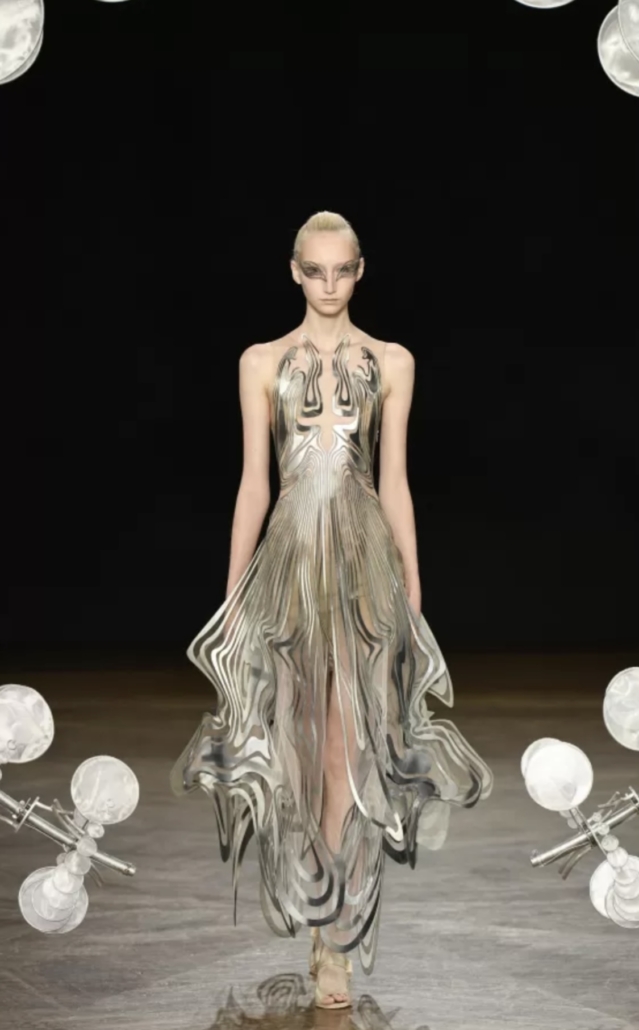
A multi-talented designer, she creates much more than just dresses with her hands and machines. She questions with philosophy, poetry but also commitment, a modern sphere caught up in its paradoxes, stifled by climatic and societal crises. Its collections, each season, through sensitive and enlightened collaborations, with architects, contemporary artists, designers question singular themes: water, air, weightlessness, the skeleton, crystallization, metamorphosis , hybridization, hypnosis, the soul, synesthesia, lucid dreaming, rebirth… By pushing back with energy and determination the limits of classical and traditional ways of thinking and seeing, she examines the potential of the imagination to transform the perception of the world, a world that she wishes to re-enchant.
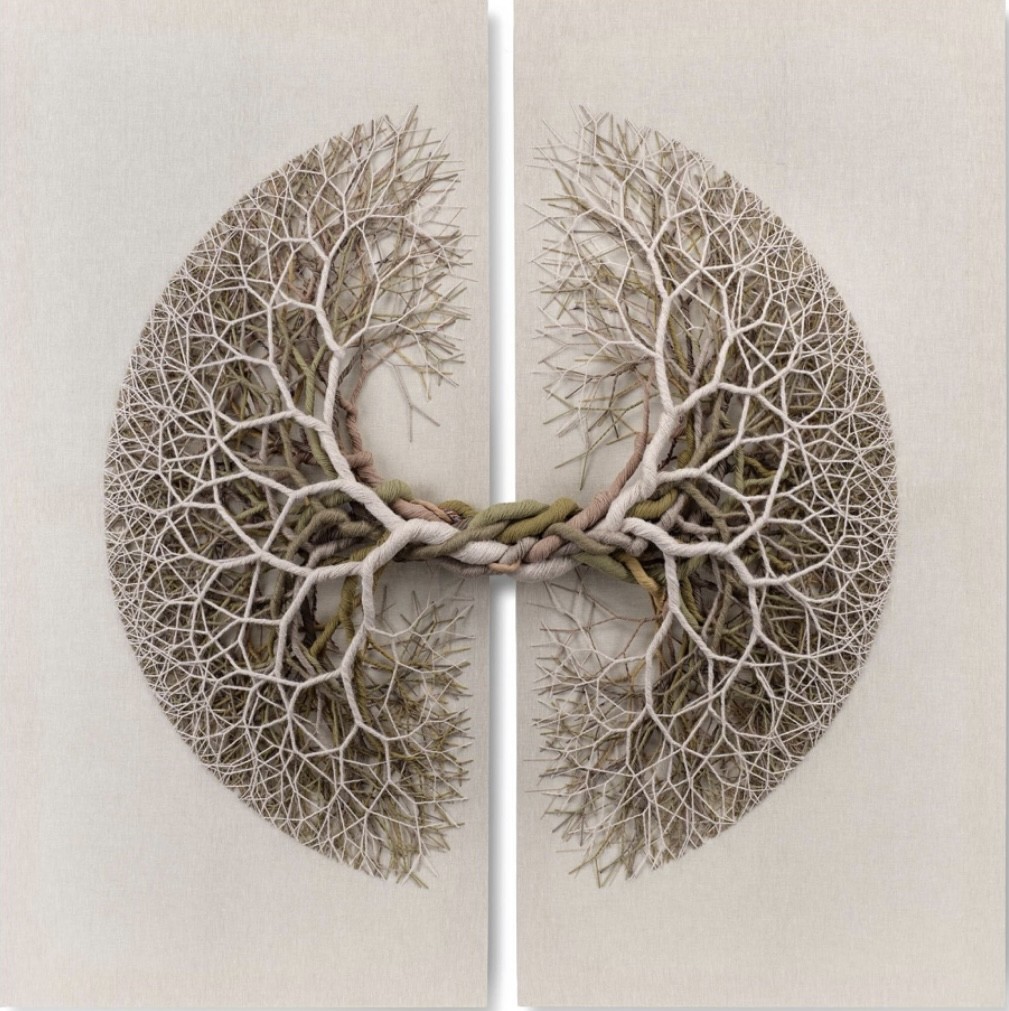
the exhibition questions the place of the body in space, its relationship to clothing and its environment, its future in a rapidly changing world. A selection of more than 100 haute couture pieces created by Iris van Herpen interact with works of contemporary art and pieces from natural sciences such as corals or fossils creating a unique resonance with historical pieces.
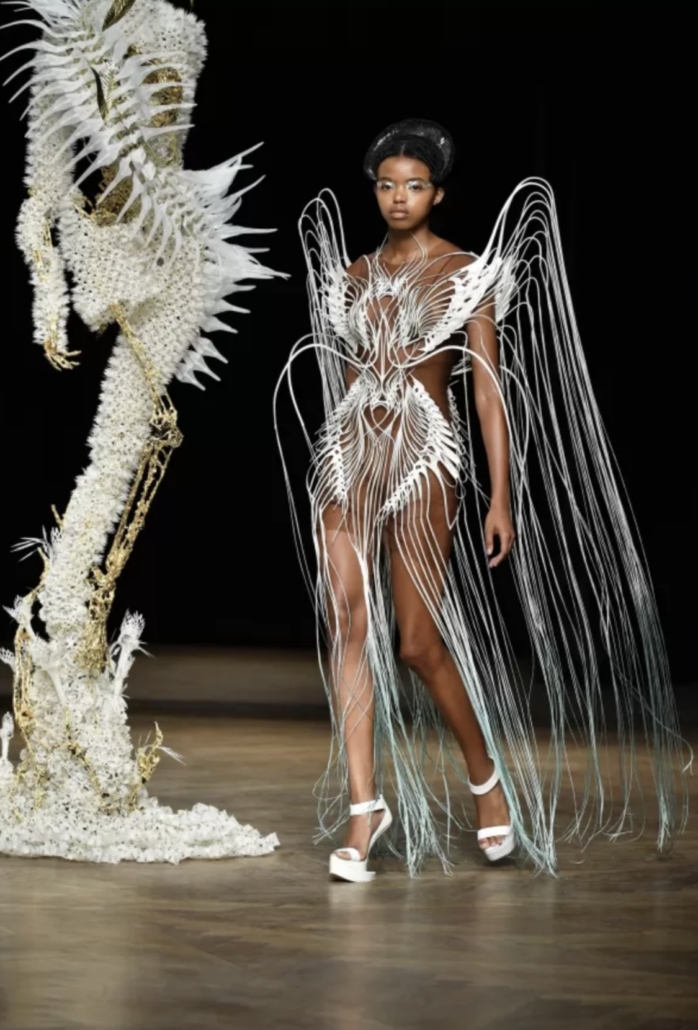
The skeleton theme is inaugurated by the Skeleton dress, echoing the hybrid skeleton of a work by Japanese artist Heishiro Ishino. The place of the body is also evoked at the heart of organic and architectural networks represented by a dress, a metaphor for a Gothic cathedral, but also by Ferruccio Laviani’s Gothic cabinet or by a documentary by Yann Arthus-Bertrand and Michael Pitiot Terra, committed to the defense of life and the interconnections of its ecosystems. Then, the visitor is invited to leave the physical dimension of the body to explore the sensory world, including photographs by Tim Walker, a work by Matthew Harrison or a spectacular projection of Renaissance Dreams by the artist Refik Anadol. Finally, the darkness of mythology around the theme of the jellyfish dialogues with works by Kate McGwire, EcoLogicStudio, Damien Hirst and even Samurai armor. An installation by Casey Curran offers a reflection on the place and physical and spiritual future of human beings.
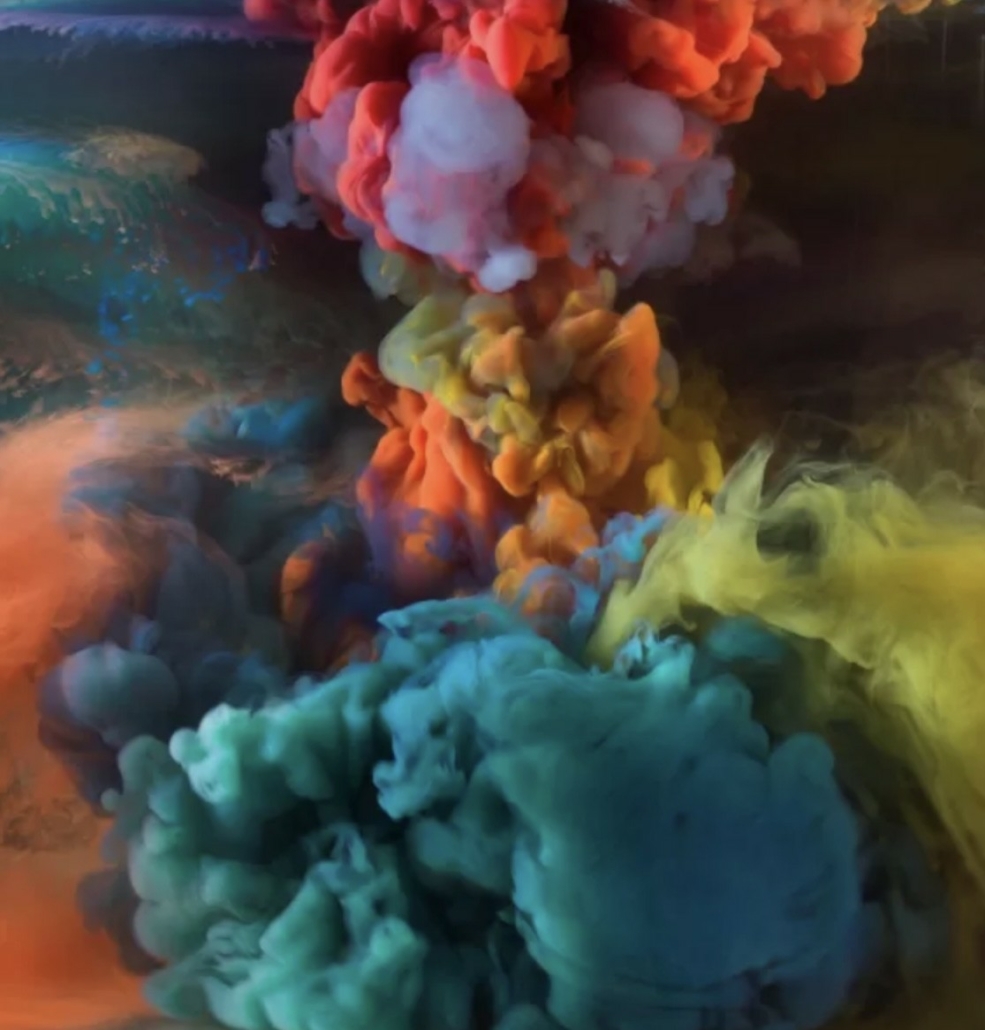
Celebrating his unique approach, this retrospective, which is structured around nine themes, identifies the very essence of his work fusing fashion, contemporary art, design and science. The theme of water and the origins of life, omnipresent in the designer’s work, inaugurates the journey. Her latest collection Carte Blanche, highlighted in this space in dialogue with the work Origins by David Spriggs, literally invites the visitor to immerse themselves in the designer’s aquatic world.
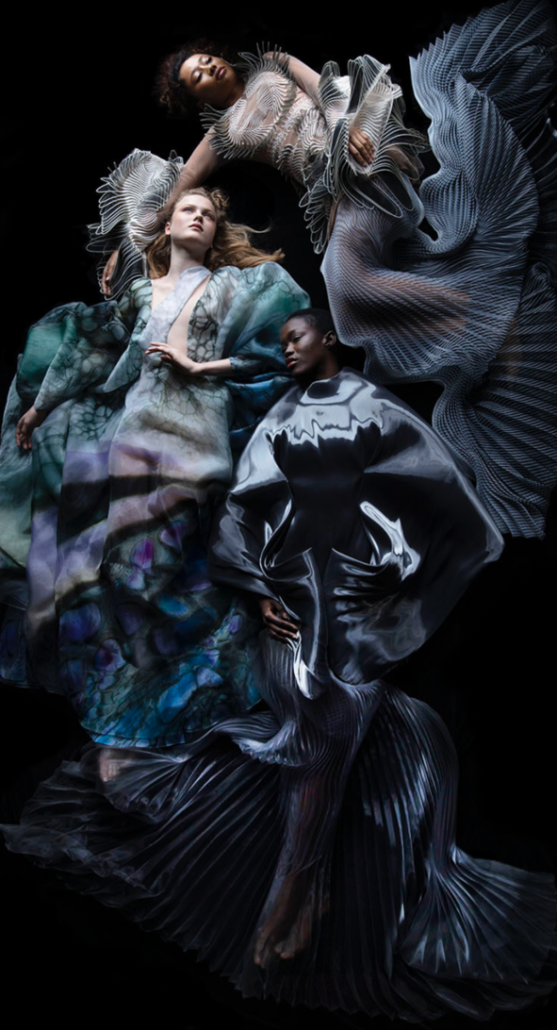
Water is also addressed on the scale of the immensity of the ocean with the wave of the Collectif Mé. A space reveals natural environments invisible to the naked eye already revealed in the 19th century by the boards of Ernst Haeckel or by the exceptional glass models of Léopold and Rudolf Blaschka. Works by Ren Ri and Tomáš Libertíny, composed by bees, contrast with the fragility of those made of paper by Rogan Brown.
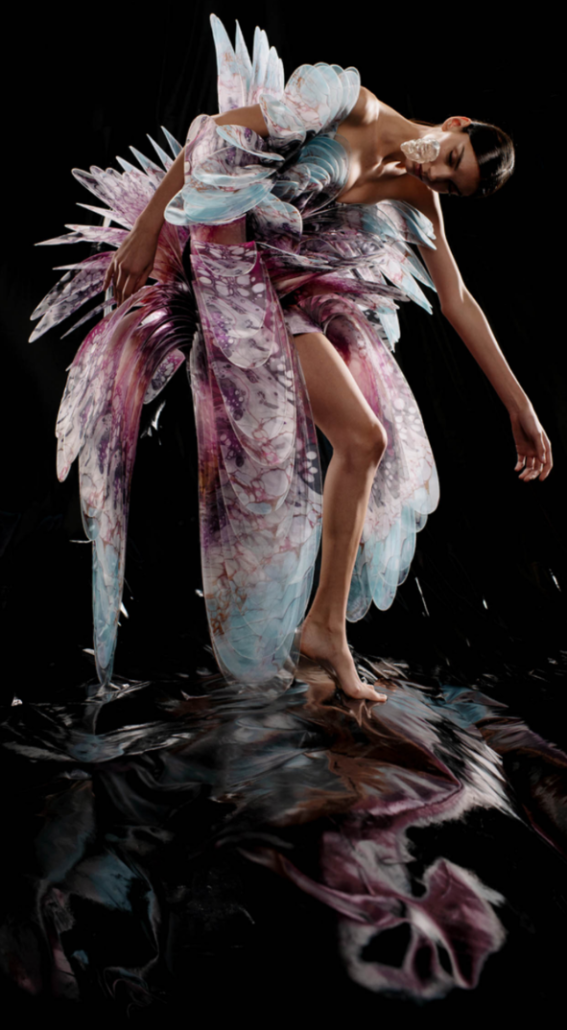
Iris van Herpen’s dresses today reinvent the “way of inhabiting” a piece of clothing. Its textiles become innovative, hybrid, results of 3D printing and laser cutting or even connected textiles. By generating these new materials and using these revolutionary textures, Iris van Herpen defines, in the manner of builders, microarchitectures, but, unlike them, microarchitectures in movement. Her dresses come to life from the first action of the body in space, in a ballet of textures and materials, frictions and sliding, colors and transparencies. Movement against movement, the second skin that she places on the surface engages microdances that trigger spaces for breathing, spaces for meditation, and reflection. Intimate dialogues between the private body and the public body, the works of Iris van Herpen question this infinite and yet infra-thin space between the body and clothing, this invisible border, which plays on the surface of the epidermis and which allows development The senses.
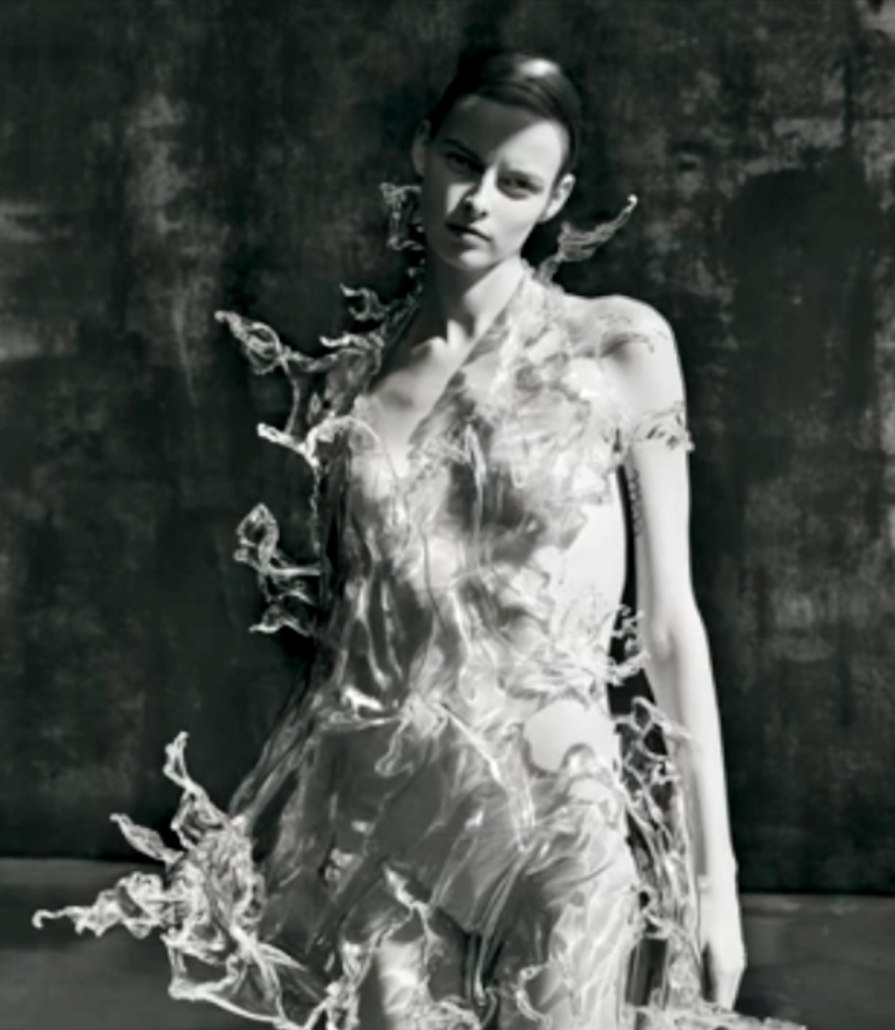
These fertile discussions around architecture are so many pollinations that make the designer the first to show, in 2010, a 3D printed look. His exchanges with artists like David Altmejd also lead him to think about the body as fiction. Dressed in a concept as much as in clothing, the bodies dressed in the works of Iris van Herpen weave close links with the past to bring out mythological reminiscences or even fantastical stories. By collaborating with Anthony Howe, she propels the being into an imaginary future where the clothing itself would be in movement, a kinetic clothing dialoguing with the complexity of human anatomy, the beauty and diversity of its environment.
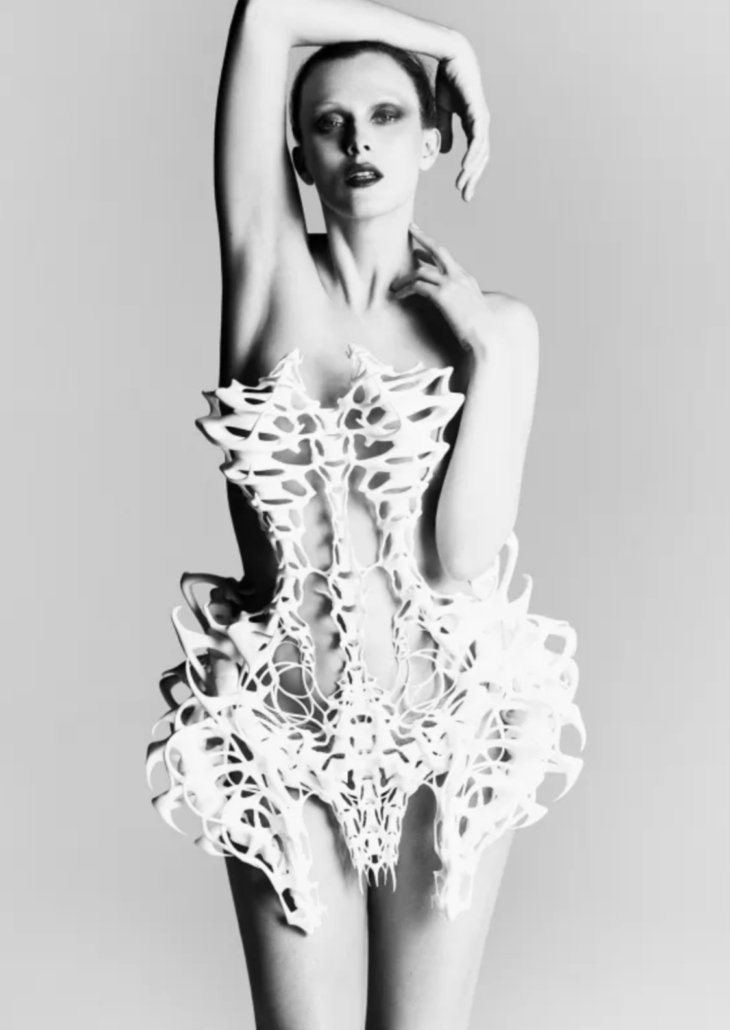
The exhibition ends with a presentation of the works of Iris van Herpen as if projected into the immensity of the cosmos. Her dresses are presented in a dance of the sky, bodies floating in space and time. The photographic works of artist Kim Keever, as well as shots of nebulae, call us to elevate ourselves to feel the world in a more holistic way. Three spaces complete the tour: an evocation of Iris van Herpen’s workshop, a cabinet of curiosities presenting her accessories (shoes, masks and elements of hairstyles) alongside elements of natural sciences and videos and a room allowing to give space to the living and moving body through videos of the designer’s fashion shows. The exhibition is accompanied by a sound composition created by Salvador Breed. It challenges the senses and further immerses the visitor in this journey around the body and themes dear to the designer.
